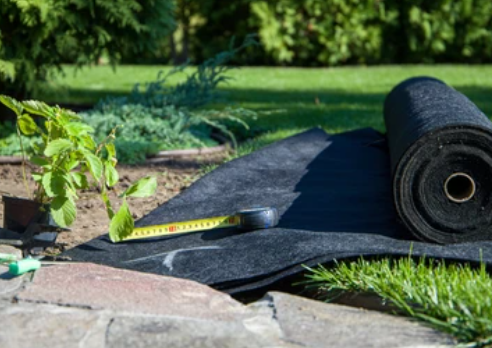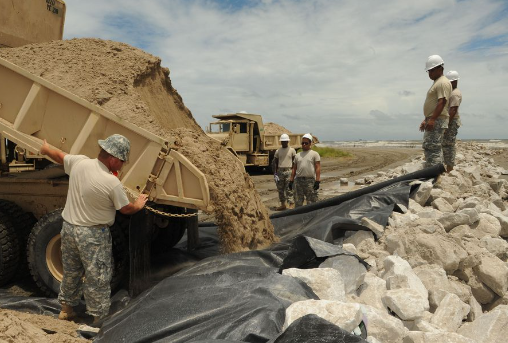- Understanding the Role of Geomembrane Liners in Waste Management
- Innovations in Geomembrane Liners for Water Management
- Geomembrane Liners: A Comprehensive Guide
- The Future of Geomembrane Liners in Civil Engineering
- Geomembrane Liners: Enhancing Landfill Stability
Manager:
WhatsApp:+86 177 0135 2670
Tel:+86 177 0135 2670
Email:marketing@okorder.com
Address:3rd Floor, No.2 Building, No.1 Sanlihe Road
How do you apply geotextile fabric?
Geotextiles are versatile materials often used in numerous civil engineering and construction projects due to their high tensile strength, durability and filtration properties. Wholesale geotextile is one of the most commonly utilized options in the industry with regard to price and reliability. They are usually found in geotextile slope protection, geotextile slope stabilization among other types of engineering works. It is important to know how to apply geotextile fabric correctly if one wants a construction project successful and long-lasting. Let us take a deep look into how we can effectively apply a geotextile fabric.

Understanding Wholesale Geotextiles and polyester geotextiles
Before discussing about the process of applying it, it’s necessary to understand what wholesale geotexitle and polyester geotextiles are all about. Herein, wholesale geotexitle refers to bulk purchases that are usually preferred by builders or contractors because they would like them to be cost-effective. On the other hand, polyester geotexitles are made from polyester fibers which have high tensility when compared with environmental endurance as well as superior filtration quality when compared with those made from other fibers. Due to these features, polyester get textiles are ideal for such applications like –geosynthetic slope protection & stabilization.
Preparation for Application
Adequate site preparation is required before installing any geo-textiles to ensure that they perform optimally and last longer than expected. The following steps outline the preparation process:
1) Site Inspection: Carry out an appraisal of terrain, soil conditions at site and any other factors that may influence installation of geo-textiles.
2) Surface Cleaning: Clear away grasses and other forms debris on top layer that could interfere with proper installation of geo-textiles.
3) Soil Compaction: Ensure enough soil consolidation so that you create a solid foundation on which the geo-textiles can be placed and which will not shift or settle with time.
4) Moisture Control: Soil moisture content needs to be kept within certain range for fear of water pooling on the soil that gives way to erosion and undermine stability of the geotextile installation.
Geotextile Slope Protection and Stabilization
Geotextile fabrics are used in slope protection projects as well as stabilization activities where they play a key role in preventing erosion, reducing sedimentation rates, increasing the slope’s stability and improving embankments. The following steps outline how to use geotextile for slope protection and stabilization:
1) Surface Preparation: Clearing the vegetation, stones or loose soil from the slope. Smoothen it out until you get a uniform base all over that will accommodate this fabric.
2) Geotextile Placement: Lay down wholesale geotextile or polyester geotextiles across the surface of a slope ensuring there is adequate overlap between adjacent rolls in order to minimize any spaces left in between them.
3) Anchoring: Different methods such as stakes, pins or trenching can be applied to secure the geotextiles against movement by winds or water.
4) Backfilling: Start filling back soil or aggregate material into the slope while compacting each layer so that it is integrated fully with geo-textile fabric enhancing its stability in association with each fill layer.
5) Vegetation Establishment; Plant some grasses on slopes which will further strengthen them naturally thus providing long term control of erosions.
Filament Geotextile Applications
Compared to staple fiber types counterparts, filament geosynthetics possess more strength and durability because they are made of continuous filaments. Filament geosynthetic materials are predominantly suitable for applications requiring high tensility strength as well as filtration capacity. Below mentioned are some common applications of filament geosynthetics."
1. Filament geotextiles are put in road construction works to strengthen the subgrade, check soil erosion and enhance the general stability and life of the roads.
2. Landfill Liners: For landfill construction purposes, filament geotextiles form part of liner system which helps in containing and separating waste materials from infiltrations.
3. Retaining Walls: Filament geotextiles find a use in building retaining walls where they provide for the structural support that prevents soil migration thus enhancing the stability of wall structure.
4. Erosion Control: They are employed for shoreline protection, bank stabilization as well as coastal engineering projects as some examples deployed by geotextiles fabric manufacturers to reduce erosion effects while preserving natural habitats.

Conclusion
The proper application of geotextile fabric is essential for ensuring the success and longevity of construction projects, particularly in the realms of slope protection, stabilization, and erosion control. Polyester is one type of textile used among many other types under this category because it offers a cost-effective solution with reliable performance characteristics. To increase its efficiency in various civil engineering pursuits, contractors or engineers should consider both how it is made and installed properly adhering to certain guidelines that have been set aside on using this product during construction processes such as slope protection among others. In contemporary building practices including geosynthetic slope protections amongst others, these make this cloth ideal.”






